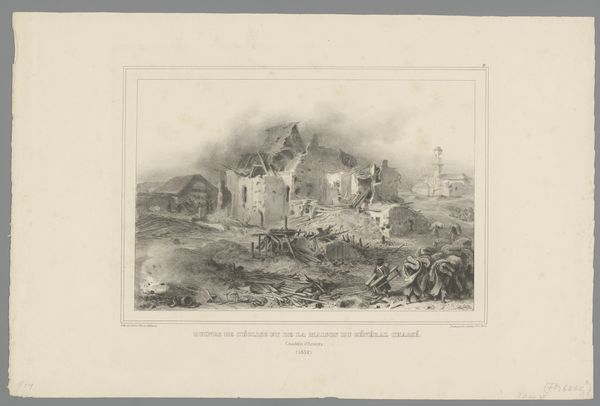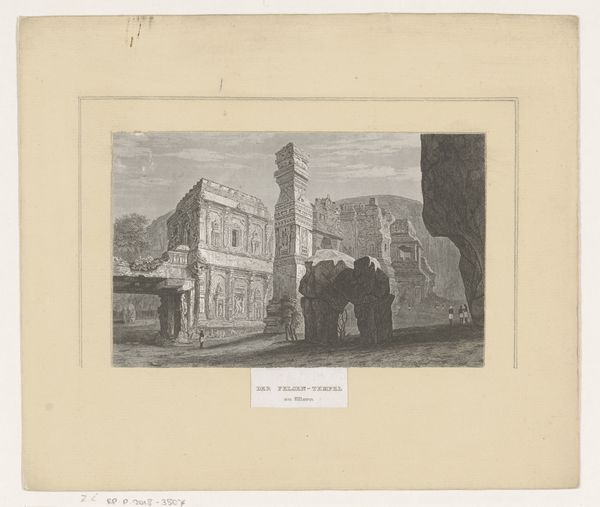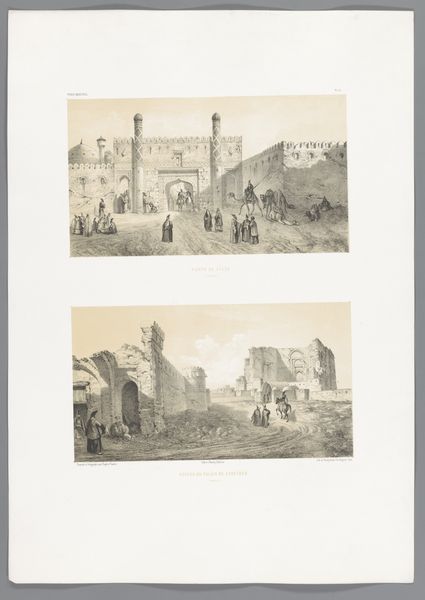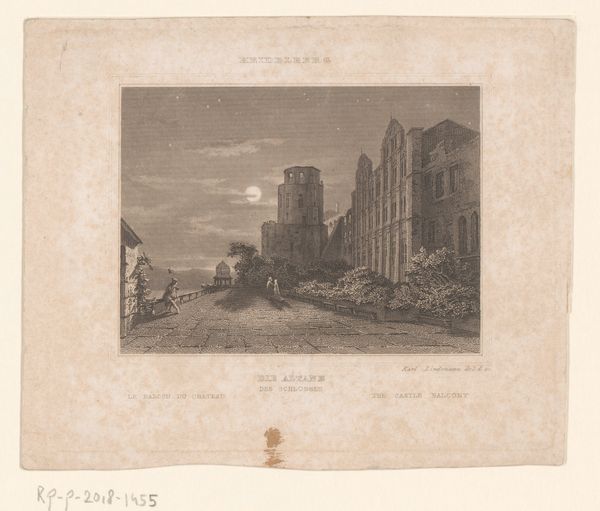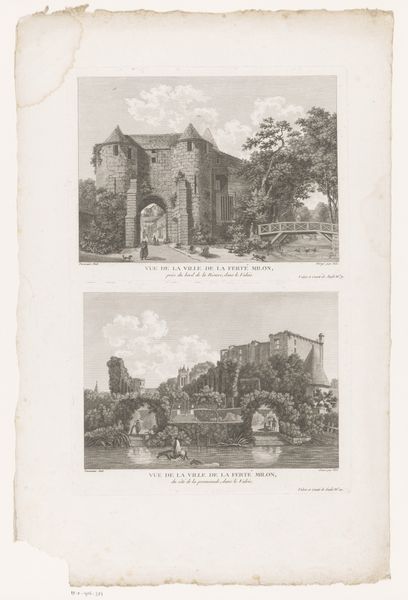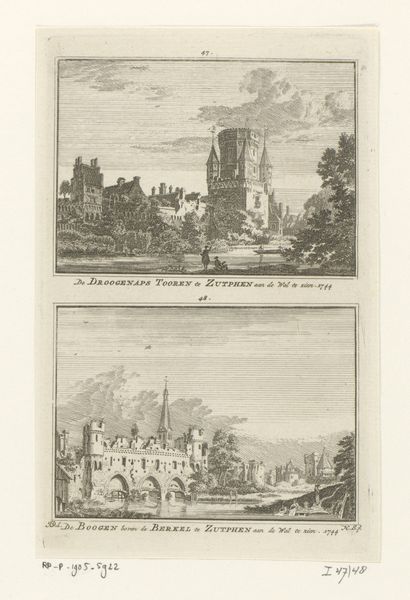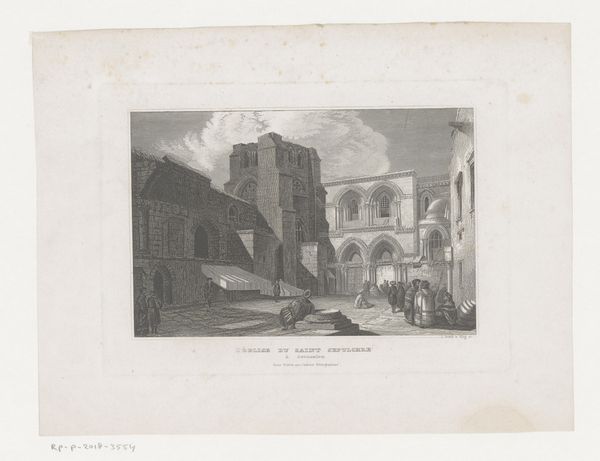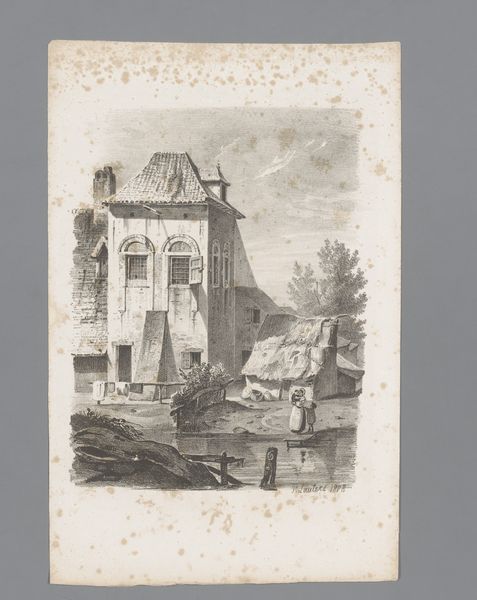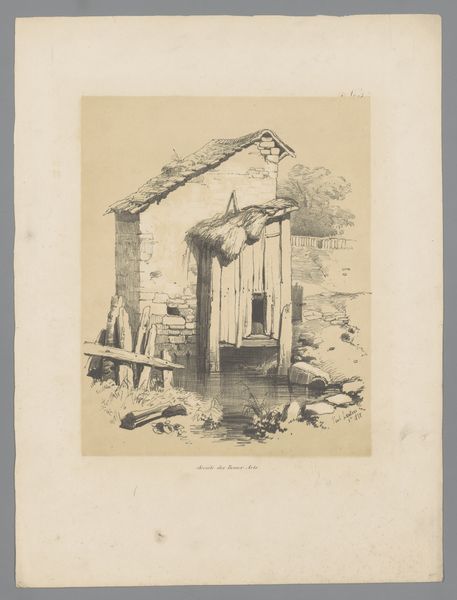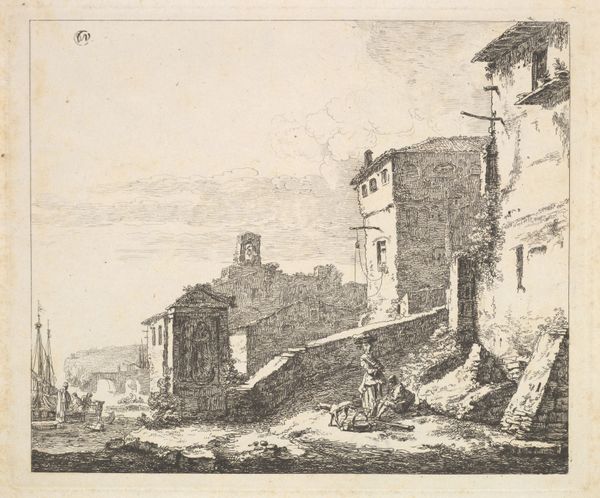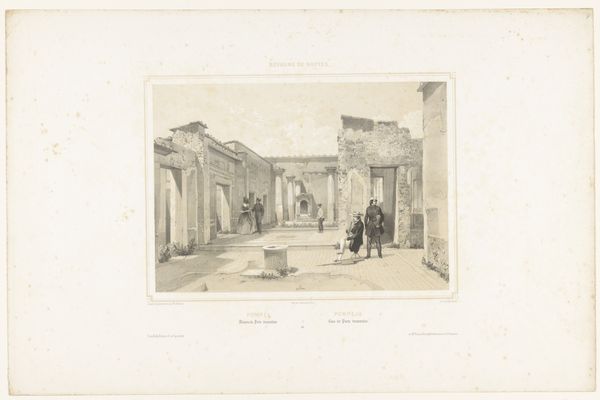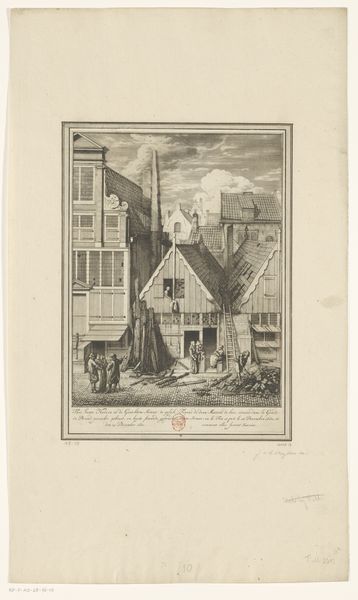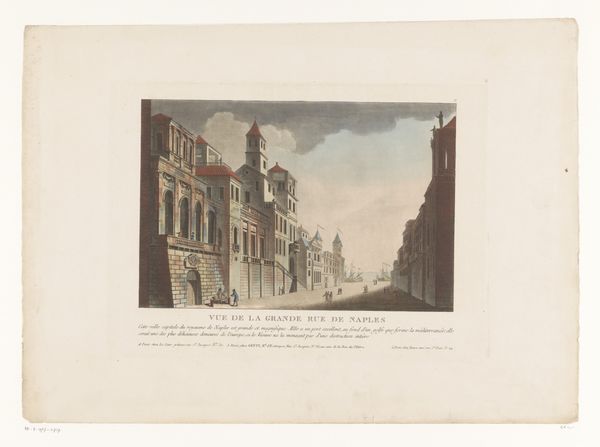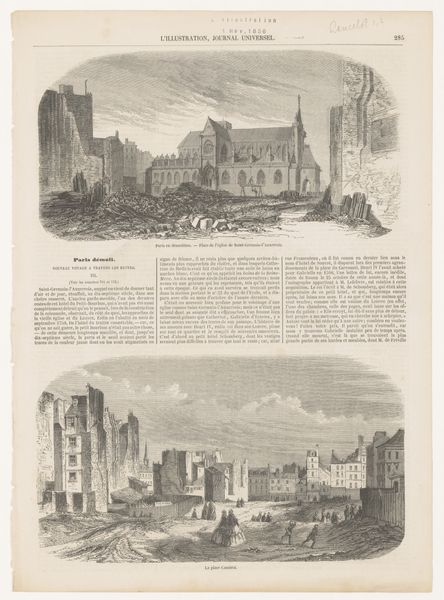
print, etching, engraving
#
dutch-golden-age
# print
#
etching
#
old engraving style
#
landscape
#
engraving
Dimensions: height 300 mm, width 189 mm
Copyright: Rijks Museum: Open Domain
This engraving, Het hofje van Kelderman, by Isaac Weissenbruch, likely created in the late 19th century, presents a seemingly tranquil courtyard scene. Notice the use of grayscale that gives the drawing a muted, melancholic atmosphere. The buildings are rendered with a sharp eye for detail, yet the scene feels strangely unresolved. Structurally, the composition is divided by the strong verticals and horizontals of the buildings, creating a sense of enclosure. The figures scattered within the courtyard are almost engulfed by the architecture, destabilizing the common meaning of domestic comfort, and suggesting a sense of alienation within the urban environment. Weissenbruch's work engages with semiotic systems of signs to represent more than just a physical place; it’s a commentary on social structures and the individual's place within them. It challenges fixed meanings of urban life, reflecting broader philosophical concerns about modernity. Consider how the architectural details function aesthetically and contribute to a larger cultural discourse. The drawing becomes a site of ongoing interpretation, inviting us to consider how the artist viewed society and the individual's role within it.
Comments
No comments
Be the first to comment and join the conversation on the ultimate creative platform.
